

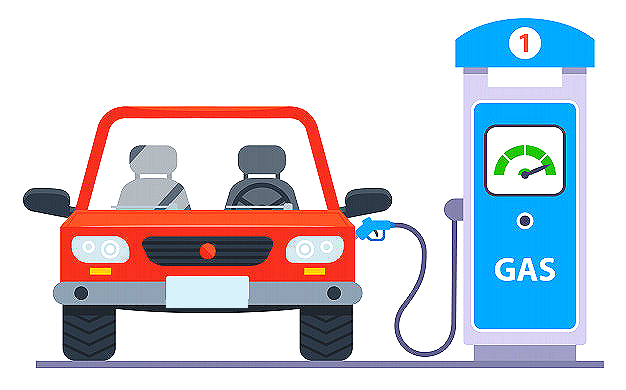

Mobile users:
For best results, view in Landscape mode.
Service stations gasoline pumps began with an 1880's
device for dispensing kerosene at an Indiana grocery store.
It was commonly used to dispense the kerosene
used in lamps and stoves.
S.F. (Sylvanus Freelove) Bowser (1854 - 1938)
Bowser was an American inventor who was widely credited
with inventing the automobile fuel pump.
Bowser marketed his patented kerosene pump starting in 1885.
Bowser sold his newly invented kerosene pump to the owner
of a grocery store in Fort Wayne, Indiana, on
September 5, 1885.
Bowser founded his company (S. F. Bowser & Company) in 1885
to dispense kerosene, widely used at the time for lighting and
cooking stoves.
S.F. Bowser & Co opened branches across the country and later
throughout the world.
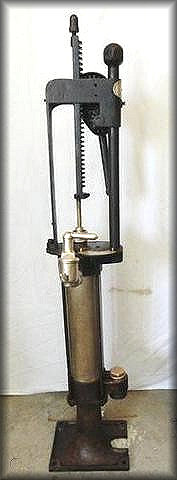 ...........
...........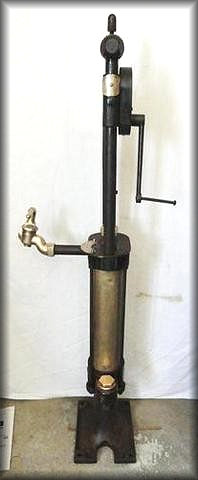
Bowser designed a simple device for reliably measuring and
dispensing kerosene for lamps, stoves, etc.
In 1900, the U.S. had about 4,000 cars (compared to 20 million horses),
but gasoline was still considered a waste by-product of
producing kerosene.
Though his pump was not originally designed to serve automobiles,
by the 1890's, Bowser noticed his invention of the kerosene
pump could accommodate the horseless carriages.
He added a hose to his pump, and eventually a nozzle.
Clerks would count the number of cranks (pumps) they made with
the handle to determine how many gallons had been delivered
into a customer’s tank (one crank would equal one gallon).
His invention soon evolved into the metered gasoline pump.
By 1905, the S. F. Bowser “Self-Measuring Gasoline Storage Pump”
was known to drivers as a “filling station.”
The original pump consisted of a square metal tank with a wooden
cabinet equipped with a suction pump operated by
hand-stroked lever action.
The Self Measuring Gasoline Storage Pump consisted of a 50-gallon
storage tank, a wooden cabinet, a manual suction
pump and a flexible hose.
This apparatus was referred to by a Bowser employee as
a “filling station,” a term still in use today.
The contraption was typically set out on the curb in front of a store.
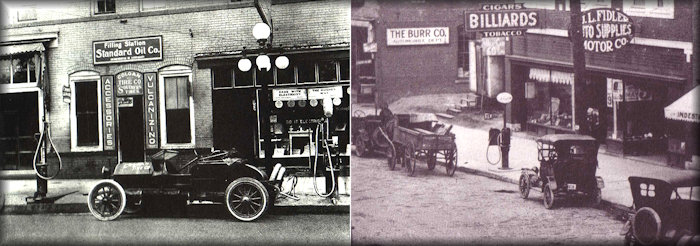
Gasoline was sold at sidewalk pumps, causing traffic jams as cars
pulled to the side of the road to refuel.
Even early businesses devoted solely to selling gasoline, such
as the world’s first purpose-built gas station in St. Louis
in 1905 or the station Standard Oil opened in Seattle in 1907,
relied on curbside pumps.
By 1910, when American roads held a half-million automobiles,
this began to pose a problem.
The drive-in gas station was the solution, helping usher in a golden age
for the automobile.
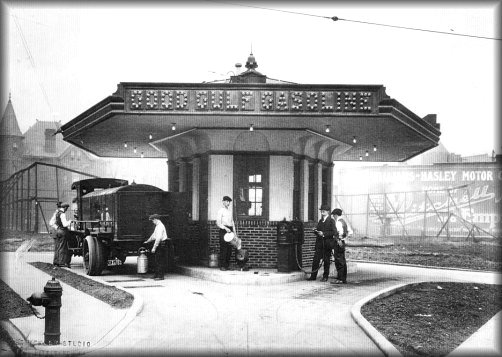
In 1913, the first "drive-in" filling station, Gulf Refining Company,
opened to the motoring public in Pittsburgh.
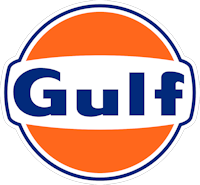
Gulf Oil was a major global oil company from 1901 - 1985.
In 1929, the US census counted 121,513 filling stations
(enumerated as “service stations” after 1948), totaling nearly
$1.8 billion in sales.
In 1928, Texaco was the first US company to sell its gasoline in
every state.